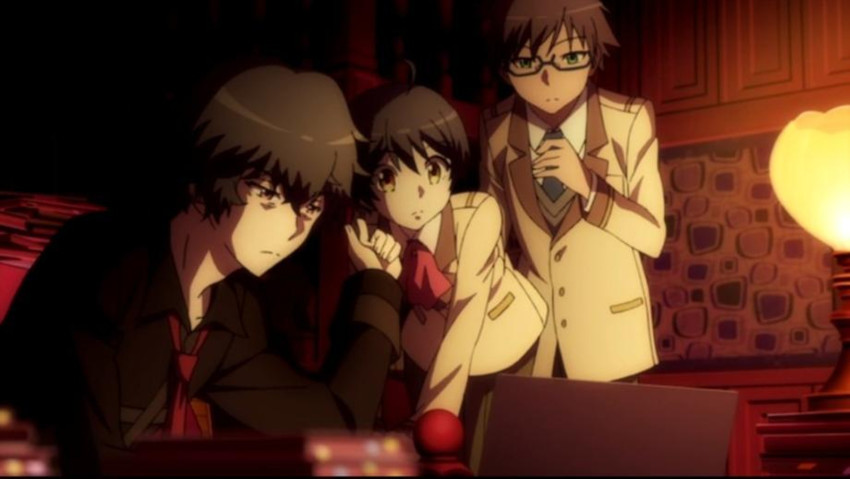Rampo Kitan
December 12, 2018 · 1 comment
By Shelley Pallis.
 Thirteen-year-old Yoshio Kobayashi has an odd reaction when he is accused of murdering his creepy teacher. Instead of whining that it wasn’t him (it wasn’t), he throws himself with gusto into solving the case, realising in the protest that crime investigation is about to become his lifelong vocation. He is so enthusiastic about it, in fact, that he badgers high-school detective Kogoro Akechi to take him under his wing so they can solve crimes together. Akechi agrees… just as long as Kobayashi isn’t a murderer (he isn’t).
Thirteen-year-old Yoshio Kobayashi has an odd reaction when he is accused of murdering his creepy teacher. Instead of whining that it wasn’t him (it wasn’t), he throws himself with gusto into solving the case, realising in the protest that crime investigation is about to become his lifelong vocation. He is so enthusiastic about it, in fact, that he badgers high-school detective Kogoro Akechi to take him under his wing so they can solve crimes together. Akechi agrees… just as long as Kobayashi isn’t a murderer (he isn’t).
Kogoro Akechi has a long history in Japanese fiction, first turning up in the 1925 story “The Murders on D Hill.” Created as a Japanese answer to Sherlock Holmes, his original, adult-themed adventures were transformed from 1930 onwards by the addition of a teenage sidekick, Yoshio Kobayashi, himself the leader of an amateur sleuthing circle called the Boys’ Detective Club. With and without the boy detectives, Akechi’s adventures stretched across four decades, and have been adapted for Japanese stage and screen on multiple occasions. The serial’s influences can be felt everywhere from the CLAMP School Detectives to the live-action K20: Legend of the Mask, which retold the story of Akechi and Kobayashi’s arch-enemy, the Fiend with 20 Faces.
Akechi’s creator, Taro Hirai, was better known by his pseudonym Edogawa Rampo, which he adopted in homage to his favourite author Edgar Allan Poe. Edogawa died in 1965, which helps explain how this anime series got to be commissioned as a commemoration of the half-century since his death. Every episode alludes to at least one Edogawa story, including the original “Fiend with 20 Faces” (#4) and “A Glimpse into Hell” (#6). The episode “Caterpillar” (#5) is particularly noteworthy because in its original incarnation it landed Edogawa in trouble with the authorities. When originally published in 1929, its depiction of a disabled war veteran was regarded by government censors as contrary to the prevailing gung-ho militarist attitudes being promoted among young Japanese, and Edogawa was asked not to reprint it. The following year, he wrote the Akechi mystery “Kyuketsuki”, which seems to have been the first time that the European idea of vampires was introduced to Japan.
As several modern Sherlock adaptations have proved, there’s a lot of fun to be had with repurposing old stories for a modern audience. However, one gets the sense with Rampo Kitan that someone on the production has been a little too eager to nudge the audience about retellings, and rather than truly pitching the show at today’s teenagers, feels obliged to use tropes and traditions that recall older versions of the stories. So it is that we have long, stagey info-dumps as the characters discuss the details of each case, and sometimes story points are glossed over in the expectation that the viewers will already know all that stuff, because they’ve read all the books. That’s not quite so easy in the English-speaking world, where only a few of the books have been translated, and even then, published in relative obscurity, whereas in Japan literally everyone will have read an Edogawa story sometime, even if they were made to do so in class.
Rampo Kitan is streaming on FunimationNow.
Matthew
December 12, 2018 9:04 pm
I loved this series, but I can see why it didn't attract a lot of attention. There's no giant robots, fanservice, or other popcorn related viewing stuff. I think Akechi would be happy with Kobayashi being his successor should anything happen to him. But for now, they're almost like a Holmes/Watson duo.